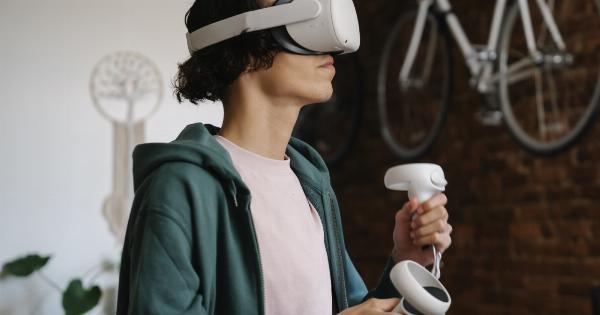Understanding the development of sight in infants is a fascinating topic that has intrigued researchers and parents alike for many years. From blurry images to clear vision, the journey of a baby’s vision development is truly remarkable.
In this article, we will explore the various stages of visual development in infants and delve into the factors that influence their ability to see the world around them.
1. The Newborn Stage
When infants are born, their vision is limited and their visual acuity is relatively poor.
Newborns have a visual range of only about 8-15 inches, which coincides perfectly with the distance between their face and their caregiver’s face during feeding and bonding moments. At this stage, their vision is characterized by high contrast sensitivity, meaning they are more likely to focus on sharp contrasts rather than subtle differences in shades and colors.
2. Development of Color Perception
As infants grow, their ability to perceive colors develops gradually. Initially, they are able to distinguish between light and dark, and as early as 2-3 months of age, they start recognizing primary colors such as red, green, and blue.
By six months, their color perception becomes more refined, and they can recognize a wider spectrum of shades.
3. Tracking and Following Objects
One of the key milestones in an infant’s visual development is their ability to track and follow objects. Around 2-3 months, babies start tracking moving objects with their eyes and can smoothly follow the movement of nearby objects.
This skill is crucial for their cognitive development and helps them in understanding cause and effect relationships.
4. Depth Perception
Depth perception, which allows us to perceive the world in three dimensions, is a complex visual skill that develops in infants around 6-7 months of age.
At this stage, infants begin to understand that objects exist in space and have relative distances from one another. They develop the ability to judge depth through cues such as interposition, motion parallax, and binocular cues.
5. Fine Motor Skills and Hand-Eye Coordination
Visual development is closely linked to the development of fine motor skills and hand-eye coordination. As infants become more adept at reaching and grasping objects, their visual perception benefits from a feedback loop.
They learn to visually track objects they intend to grasp and refine their hand-eye coordination to execute precise movements.
6. Visual Memory and Object Recognition
By 8-9 months, infants develop visual memory, which enables them to recognize familiar objects and people even when they are not physically present.
This cognitive ability plays a significant role in their social and emotional development as they begin to bond with caregivers and identify their favorite toys.
7. Visual Preferences
Throughout their first year, infants start displaying visual preferences. They show a preference for faces, especially their caregivers’, as early as a few weeks old.
As their visual acuity and color perception improve, they also show preferences for toys with vibrant colors, high contrast patterns, and moving elements.
8. Visual Stimulation and Brain Development
Providing appropriate visual stimulation is essential for the healthy development of an infant’s vision.
High-contrast toys, black and white patterns, and visually engaging objects help infants strengthen their visual skills and promote brain development. Engaging in interactive games and reading picture books also contribute to their visual learning and cognitive growth.
9. Screen Time and Visual Development
In today’s digital age, it is crucial to consider the impact of screen time on infants’ visual development.
Excessive screen exposure at a young age can affect their visual development, potentially causing issues such as eye strain, reduced attention span, and delayed language development. It is recommended to limit screen time for infants and encourage more interactive, hands-on activities.
10. When to Seek Professional Help
While most infants’ visual development follows a predictable pattern, it is essential to be aware of potential vision problems.
If you notice any signs of crossed or misaligned eyes, excessive tearing, extreme sensitivity to light, or unusual eye movements, it is advisable to consult a pediatric ophthalmologist or an eye care professional for further evaluation.
Conclusion
The development of sight in infants is a remarkable journey that encompasses various stages and milestones. From the blurry world of newborns to the vibrant and detailed perception of toddlers, their visual abilities evolve rapidly.
Understanding the different stages of visual development in infants can help parents and caregivers provide appropriate visual stimulation and support healthy growth. Witnessing a baby’s newfound ability to see and interpret the world around them is a testament to the wonders of their developing vision.































